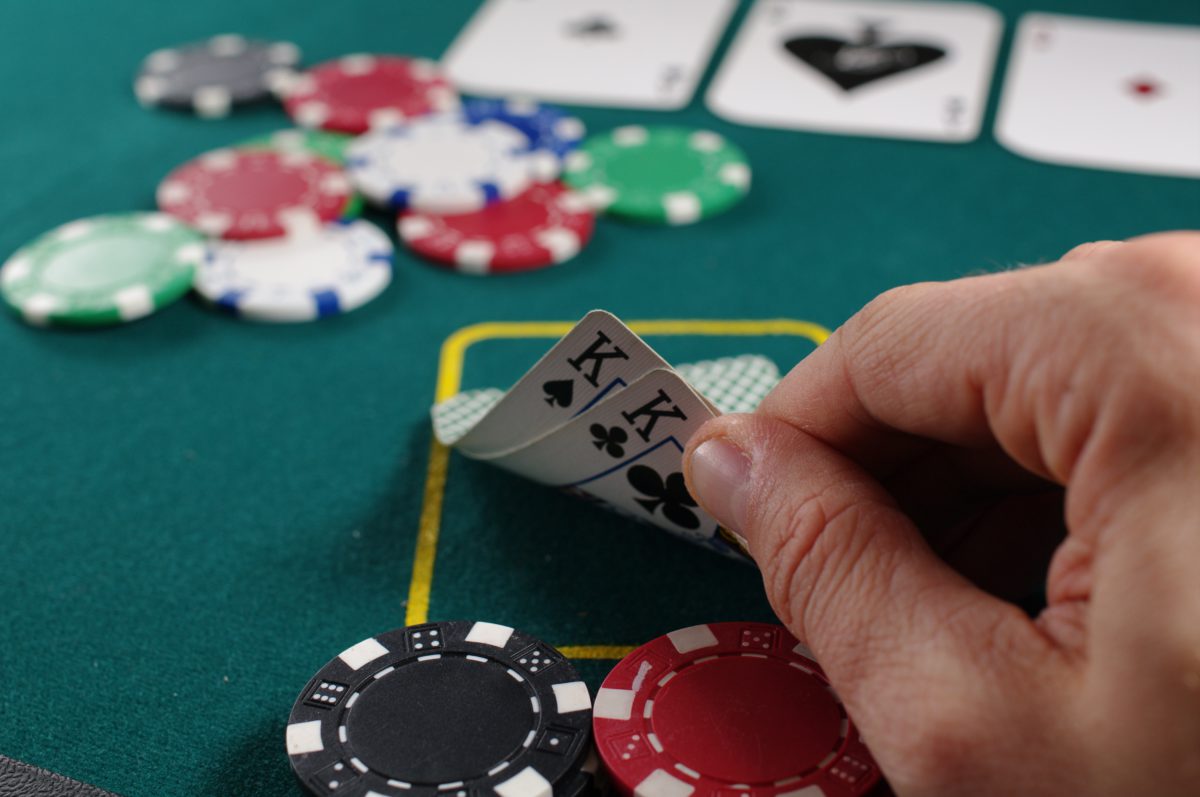
‘You Gotta Know When To Hold’em, When To Fold’em’ — A Quick History Of Poker
By a Biometrica staffer
Late last week, Massachusetts’ Encore Boston Harbor Casino said it did not have any plans to bring poker back to its gaming floor any time soon, though a final decision would likely be made by the end of the year at the earliest. A spokesperson also said that if the $2.6 billion resort-casino in Everett did decide to reintroduce live poker, it would probably be with a reduced capacity, as the casino tries to “prioritize space” based on “current market conditions.”
Maybe to some people’s surprise, the pointed absence of legal poker in either Encore or MGM Springfield since operations resumed in full in May has not been welcomed by the general public. According to one official with the Massachusetts Gaming Commission, complaints from patrons about the lack of poker “have increased tenfold in the last two weeks.”
Experts say that under the commission’s rules, only four players are allowed per table, leading the two companies to conclude that using up space for it would not be profitable, especially as compared to some of the other offerings they have.
But despite this notion that catering to poker players is not currently profitable, the truth is that this card game has had a long history in America, and is one of the most popular games with amateurs. In fact, Colonel Jacob Schenck, the erstwhile-U.S. minister to Great Britain in the 1870s, once called it America’s “national game.”
So where did poker come from? And how did it become so popular?
Despite the fact that poker really came into its own in the United States, the roots of the game can be traced back nearly 1,000 years to countries halfway across the globe. The exact origins of the game aren’t known. Some say that it began in the 900s in China, others point to similar games in Persia in the 1500s. But most historians agree that the form of poker we know today emerged from some amalgamation of the French game “Poque” and the British game “Brag,” which lent to early iterations of poker its characteristic 20-card deck. The games also had German and Spanish roots, and were based on bluffing or betting high on lousy cards.
When the French came to the Americas, they brought with them Poque to New Orleans. Meanwhile, British merchants and colonists imported Brag. The games thus became popular in the two European countries’ colonies. In 1803, the Louisiana Purchase saw then-President Thomas Jefferson give cash to Napoleon to finance his wars in exchange for a tract of land including New Orleans.
Poque then spread to the English-speaking colonies, leading to the two combining into some form of the game we know and love today. By 1834, standard card decks went from having 20 cards to 52 cards.
New Orleans was central, both to trade and to the proliferation of poker as a game. It was a significant port on the Mississippi River, which was the largest waterway in North America. Through the river, New Orleans was neatly accessible to the Gulf of Mexico, the Caribbean, and the Atlantic Ocean, in addition to the rest of the country. The river was used to transport goods, and the crews upon the riverboats spread throughout the colonies the game of poker. This is when the “steamboat gambler” became well-known.
Poker continued to maintain its lofty status among troops on both sides of the Civil War. After, as Americans moved to settle the west, poker became ubiquitous in the notorious saloons that dotted the frontier settlements and mining towns of the Wild, Wild West. Due largely to the association of the western expansion with an “anything goes” attitude, poker began to be considered the game of scoundrels, more than of the genteel. Violence, cheating, and arming oneself with knives and guns were not uncommon.
It took a while for these perceptions to fade. During World War I, American forces abroad popularized the game among the Europeans, despite the fact that it had been introduced to Queen Victoria in 1871. By the 1920s, the game had established a foothold with members of both sexes and all stratas of society. By the middle of the century, poker was noted as American men’s favorite card game, and women’s third favorite.
In the 1970s, Texas Hold’em took over, especially once it became the focal point of the World Series of Poker. Most historians generally seem to agree that the inception of this style of play was in the early 1900s in Robstown, Texas, but it did not venture outside the state until around 1967, when it was introduced to the Golden Nugget in Las Vegas. It became a source of intrigue due to the perception that unlike most other forms of gambling, Texas Hold’em calls for strategic thinking and skill.
In 1969, the Dune — a key landmark on the Strip at that time — held a Texas Hold’em tournament. Then in 1970, a father-son duo, Benny and Jack Binion, created the World Series of Poker, with Texas Hold’em as the game of choice. The events that unfolded in this rebranding of the Gambling Fraternity Convention is worth its own in-depth look, which is a story for another time.
The two factors that had the most impact on the game were, first, when tournaments began to be televised and cameras were devised to allow the audience at home to see a player’s hidden cards; and second, the introduction of online poker, which allowed many average people to easily and conveniently play the game via the internet.
Today, poker is the favored game of choice for amateurs, professionals, and celebrities alike, with millions having adopted wholeheartedly this uniquely American past-time.
You can read a much longer and more detailed history of poker here.